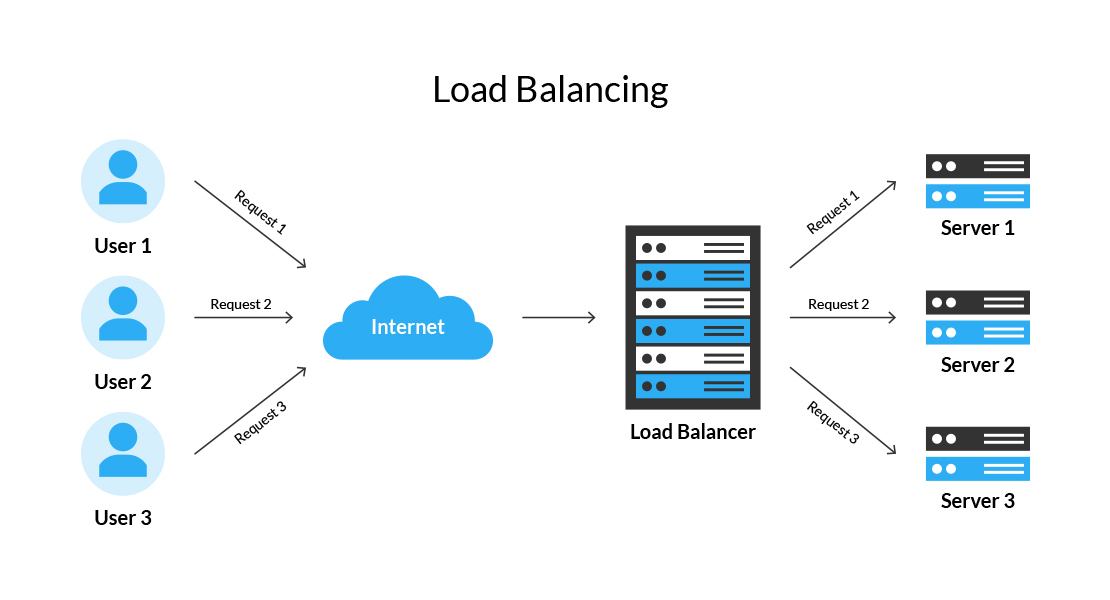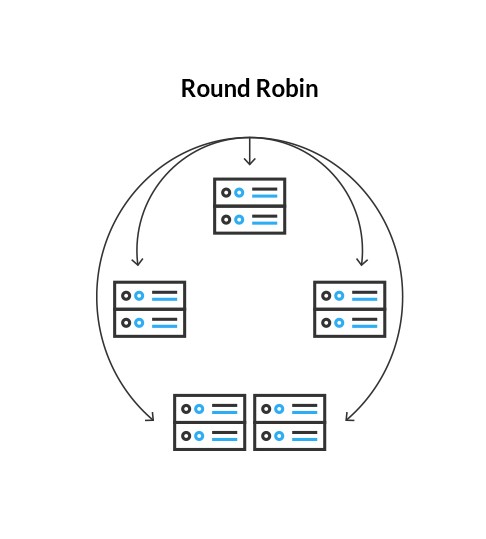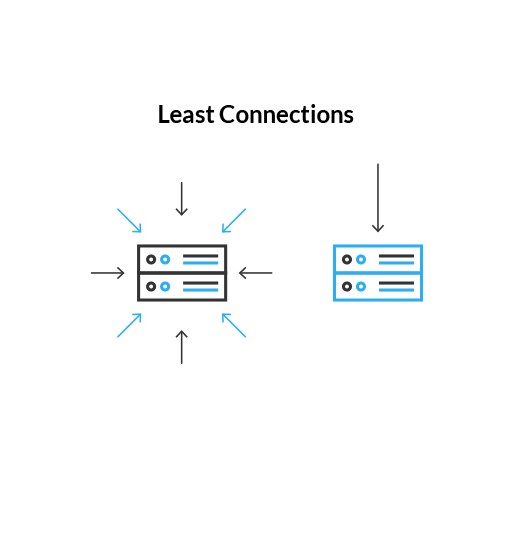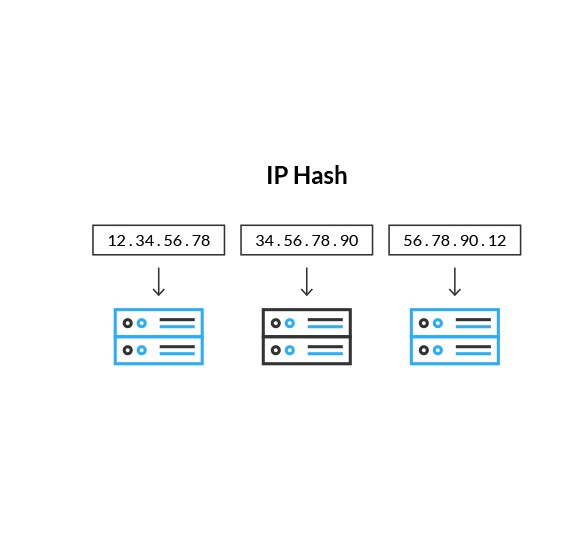With the steep rise in online users, a business cannot afford to have their web servers overloaded. Slowness, faulty network can have a negative impact on your business services and result into poor end user experience. To handle this issue you can incorporate CDN service along with Load Balancing technique that reduce the latency, easily distribute the traffic and run the entire operations smoothly.
CDNs and load balancers are both highly effective for distributing cloud-native applications. They fill big shoes in guaranteeing smooth-flowing operations between end-users and applications. CDN and Load Balancers when combined together can deliver content more efficiently and can achieve desirable results much faster. CDN efficiently reduces latency by offering information to the user from the nearest server whereas Load Balancing evenly distributes traffic among different servers so there is no load on one particular server. In the following article we will discuss how CDN and Load Balancing works
Working of CDN
Content Delivery Network or CDN, as the name aptly suggests is a network of servers across multiple geographic locations. The purpose of such a network is swift delivery of data to the end users from servers closest to their location. The working of Content Delivery Network is based on the fact that when the end user tries to access the data from a server quite distant from its location, it can sometimes experience lag or time delay in transmission. This is because every time a request is sent to a server, it has to do multiple hops before it reaches the destination. For instance, if a user in Texas tries to access a server in Washington DC, the data has to be transmitted along a long distance.
Under CDN, the main server is connected to a network of servers spread across multiple geographic regions. The data is replicated to all the servers so that when the user tries to access the data it is directed to the nearest server. The data that is stored on the main server is constantly replicated to all the CDN servers which ensures a faster response and also data replication in case the data is lost on the main server. Content Delivery Networks are useful when swift streaming of data is required.
Following are some of the techniques CDN uses for smarter content deliver
Path Mapping
Mapping paths to the backend content servers (upstream servers) is called path mapping. Path mapping is a method where you map the URL part to fetch data from the backend servers (usually called upstream servers in a reverse proxy scenario). Let us understand this better with an example
For Example :
CDN host - www.domain.com/client
Where the origin proxy path is '/' and origin IP address is 12.34.56.78 So, with the help of path mapping we can map https://www.domain.com/client and pull data from different origin that is being hosted on 12.34.56.78 With the help of Path mapping multiple origins can be used (also load balanced) with different origin servers.
Alias
Alias allows you to create a generic subdomain such as demo.yourdomain.com, allowing you to keep the same URLs even if you point your CNAME record to a different URL. For example, if domain name for your website is sample.net, you can register another domain name for the same website - sample.com and have it point to the location of sample.net.
What is Load Balancing?
Load Balancing is a technique where the inbound traffic is distributed across multiple servers thereby reducing load on one particular server. When hundreds of users are concurrently requesting access to data, it gets hard for any one server to keep up and continually serve high-quality videos, photos, text, application data, etc at an optimal speed. This leads to slowness and lags which may affect your business directly. Using Load Balancing, you can re-direct network traffic to specific servers within pool of servers helping prevent any one server from carrying too much of load and eventually optimizing network availability and responsiveness.
There are various load balancing techniques that you can deploy to balance web servers. Web servers can be both hardware or software based. Hardware load balancers some with propriety hardware along with software. Software load balancers can be installed on your server.
Working of Load Balancer
Step 1: Load Balancer usually is a software code that runs on the server where all the clients are connected making requests. Load Balancer accepts clients request and performs further action.
Step 2: Load Balancer identifies which backend server is available, its current load and additional request processing capability. Here, Load Balancer user one of the various load balancing techniques to process the request. (Load balancing techniques are discussed later in this article.)
Step 3: Once the Load Balancer identifies the specific backend server, it passes the request to the desired server for processing. The backend server processes the request and passes on the information to the load balancer.
Step 4: Once the request is processes and reaches Load Balancer, it passes on the processed information to the client.
The following diagram can help you understand the working of Load Balancer in a better way

The whole process if performed in highly efficient way with minimum of processing time that the end user is never aware of the what is going on in the background giving the user the best possible experience.
Following are three techniques we use for load balancing
Round Robin
When multiple servers are connected in a cluster, the requests are sent sequentially to the servers. A single domain name is assigned to the servers connected to each other. Each of these servers is provided a unique IP address. The DNS has the list of all the IP addresses associated with the domain name. When a request for the domain name is incident on the load balancer, the load balancer sends the request to the cluster of servers in a sequential order.

Least Connections
A server handles multiple network connections simultaneously. In this method of load balancing, the load balancer forwards the HTTP request to the server handling the least connections in the cluster. This is determined by taking the computing capacity and load of each server.

IP Hash
In this type of load balancing, the IP address is the determining factor of forwarding requests. With the help of an algorithm, the load balancer uses the source and destination IP address to generate a unique hash key. This key is used to establish a unique connection between a client and server. If the user is disconnected, the user can reconnect to the same session on the server using the key. It is generally used when the user needs to connect to the same session after getting disconnected abruptly.

Uses of Load Balancing
Improved Scalability
With sudden spike in traffic, your server will face difficulties to handle excessive traffic and eventually crash. Load Balancing can re-direct traffic across multiple servers and easily manage increasing traffic in a much easier way.
Reduced Downtime
Load Balancing technique allows you to take any server offline for maintenance and while the server is offline it can channel traffic to other resources without any downtime. This way you can reduce the downtime, maintain the uptime and improve the performance.
Reduced Failures
In case of hardware/software failure leading to a server going offline, Load Balancers detects the failure in time and can bypass the detected failure by re-distributing resources to other areas that are unaffected, thus causing minimal disruption.
Redundancy
By implementing load balancing you can achieve redundancy. When the web traffic is sent to two or more web servers and one server fails, then the load balancer will automatically transfer the traffic to the other working servers. Using Load Balancers, you can maintain multiple servers and can be assured that a working server will always be online to handle site traffic even when the hardware fails.
Summary
Load Balancing is the technique of distributing incoming network traffic. Using CDN along with Load Balancers you can setup multiple servers that constitute a server farm or server pool to increase the efficiency and reduce downtime. Many busnesses today are using the combination of these two technologies because of the the numerous advantages it brings to the table. CDNs and load balancers together are highly efficient in helping traffic reach their destinations in best possible way. They can not only optimize the delivery but maximize website and application speed. Both the technology can be implemented for scalability purposes and efficient distribution purposes.